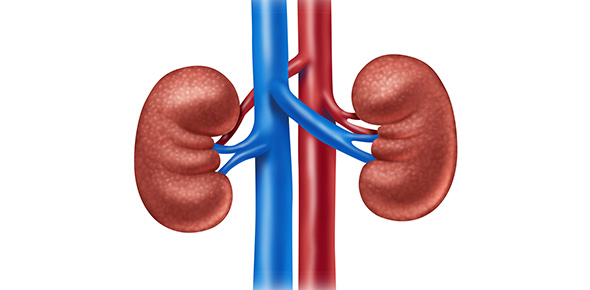Med Surg Renal

Please select the best answer
- 1.
Which of the following is false?
- A.
Dialysis is used to rid the body of excess fluid and electorytes
- B.
Hemodialysis requires internal or external access device
- C.
Peritoneal dialysis involves instillation of fluid into the peritoneal cavity and the peritoneum serves as the filtration membrane
- D.
Dialysis replaces the hormonal functions of the kidney, such as the release of erythropoietin
- E.
None of the above
Correct Answer
D. Dialysis replaces the hormonal functions of the kidney, such as the release of erythropoietinExplanation
Dialysis does not replace the hormonal functions of the kidney (ATI, Med-Surg, p. 430).Rate this question:
-
- 2.
Which of the following is not a risk factor for dialysis?
- A.
Renal sufficiency
- B.
Drug overdose
- C.
Chronic renal failure
- D.
Hyperkalemia
- E.
None of the above
Correct Answer
A. Renal sufficiencyExplanation
Risk factors for dialysis: Renal INsufficiency, acute renal failure, chronic renal failure, drug overdose, persistent hyperkalemia, hypervolemia unresponsive to diuretics (ATI, Med-Surg, p. 430).Rate this question:
-
- 3.
Which of the following is not a complication following hemodialysis?
- A.
Hypotension and Headache
- B.
Muscle cramps and Bleeding
- C.
Hypervolemia and N&V
- D.
Hepatitis and Disequilibrium syndrome
- E.
None of the above
Correct Answer
C. Hypervolemia and N&VExplanation
After hemodialysis assess for complications (hypotensin, access clotting, headache, muscle cramps, bleeding, disequilibrium syndrome, hepatitis), access site for bleeding and infection. Assess for nausea, vomiting, and LOC. Assess for signs of HYPOVOLEMIA (ATI, Med-Surg, p. 431).Rate this question:
-
- 4.
Which of the following is not included in patient teaching?
- A.
Avoid carrying objects that compress the extrimity
- B.
Avoid all liftining
- C.
Perform hand exercises that promote fistula maturation
- D.
Avoid sleeping with body weight on top of the extremity with the access device
- E.
None of the above
Correct Answer
B. Avoid all liftiningExplanation
Avoid lifting heavy objects with the access-site arm (ATI, Med-Surg, p. 431).Rate this question:
-
- 5.
Which of the following is expected:
- A.
Increase in weight
- B.
Decrease in blood pressure
- C.
Decrease in BUN
- D.
Decrease in eletrolytes
- E.
None of the above
Correct Answer
A. Increase in weightExplanation
Decreases in blood pressure, weight, and laboratory values (BUN, serum creatinine, electrolytes, hematrocrit) are expected following dialysisRate this question:
-
- 6.
In regards to peritoneal dialysis, which of the following does not need to be reported to the physician?
- A.
Respiratory distress
- B.
Abdominal pain
- C.
Inflow that exceeds outflow
- D.
Light yellow outflow
- E.
None of the above
Correct Answer
D. Light yellow outflowExplanation
Amount of outflow is expected to equal or exceed amount of dialysate inflow. Color that is clear and light yellow is expecte. Monitor for complications (respiratory distress, abdominal pain, insufficient outflow, discolored outflow). Monitor for signs of infection (fever, blood, cloudy, or frothy dialysate return, drainage at access site) (ATI, Med-Surg, p. 432).Rate this question:
-
- 7.
The nurse observes that the PD catheter has a fibrin clot, the nurse's priority duty is to:
- A.
Strip the catheter
- B.
Discontinue the infusion and notify the primary care provider
- C.
Milk the PD catheter
- D.
All of the above
- E.
None of the above
Correct Answer
C. Milk the PD catheterExplanation
Carefully milk PD catheter if firbin clot has formed (ATI, med-surg, p. 432).Rate this question:
-
- 8.
Which is true of disequilibrium syndrome?
- A.
It is a complication of peritoneal dialysis
- B.
Requires clean technique
- C.
Signs include abdominal pain and hyperglycemia
- D.
Is an aspect of peritonitis
- E.
None of the above
Correct Answer
E. None of the aboveExplanation
Disequilibrium syndrome is too rapid a decrease of BUN. Eearly recognition is essential. Signs include nausea, vomiting, change in LOC, seizures, and agitation. Can be avoided with a slow dialysis exhcnage rate, especially in older adult clients and those being newly treated with hemodialysis. Anticonvulsants/barbiturates may be needed (ATI, Med-Surg, p. 432).Rate this question:
-
- 9.
Which of the following is not a complication of hemodialysis?
- A.
Hyperglycemia
- B.
Disequilibrium syndrome
- C.
Anemia
- D.
Hypotension
- E.
Infectious diseases
Correct Answer
A. HyperglycemiaExplanation
Complications include: Clotting/infection of access site (use surgical aseptic technique during cannulation, avoid compression of access site/extremity). Disequilibrium syndrome (too rapid a decrease of BUN). Hypotention (discontinue dialysis. Place client in Trendelenberg position). Anemia (administer prescribed medication therapy (EPO) to stimulate production of red blood cells). Infectious diseases (HD poses a risk for transmission of bloodborne diseases such as HIV and hepatitis B and C. Maintain sterility of equipment. Use standard precautions). HYPERGLYCEMIA is a complication of peritoneal dialysis (ATI, Med/Surg, p. 432-433).Rate this question:
-
- 10.
Which of the following is the major complication of PD?
- A.
Infection at access site
- B.
Protein loss
- C.
Hyperglycemia
- D.
Peritonitis
- E.
None of the above
Correct Answer
D. PeritonitisExplanation
Peritonitis is the major complication of PD (ATI, Med-Surg, p. 433).Rate this question:
-
Quiz Review Timeline +
Our quizzes are rigorously reviewed, monitored and continuously updated by our expert board to maintain accuracy, relevance, and timeliness.
-
Current Version
-
Feb 22, 2013Quiz Edited by
ProProfs Editorial Team -
Aug 25, 2012Quiz Created by
Chimene02
 Back to top
Back to top


